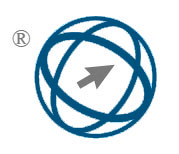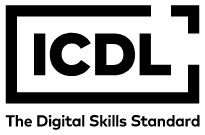A Deep Learning Framework with Spherical Harmonic Encoding for 3D Joint Angle Analysis and Injury Prediction
Abstract
This study focuses on the three-dimensional dynamic analysis of joint angles and the prediction of sports injuries in long-distance runners, addressing the significant limitations of traditional approaches in this field. The research is grounded in the fact that millions of athletes participate in long-distance running events worldwide each year, with nearly 30% experiencing joint-related injuries. Traditional joint angle analysis methods exhibit error rates as high as 15%, and injury prediction accuracy remains limited to around 30%. To overcome these challenges, a novel deep learning-based model was developed, utilizing the public Human3.6M dataset (comprising 500 samples of long-distance running motion) and 300 additional samples collected from 30 professional club athletes. The model integrates a customized feature extraction module, a joint angle encoding component based on spherical harmonics, a temporal dynamics module, and a probabilistic injury prediction mechanism. Experimental results demonstrate that the average joint angle analysis error was reduced to 5.2%, while injury prediction accuracy improved to 75%. Our model adopts a modular deep learning architecture consisting of a feature extraction module with custom kernel functions, a joint angle encoding component based on spherical harmonics, a temporal dynamics modeling component leveraging non-stationary temporal kernels, and a final injury prediction component using a Gaussian Mixture Model integrated with Bayesian inference. Evaluation metrics include joint angle analysis error rate, injury prediction accuracy, precision, recall, and F1 score. On joint angle analysis, the model achieved an average error rate of 5.2%, significantly outperforming the 14.8% of the 3D-Traditional baseline and the 12.3% of the CNN-2D baseline. For injury prediction, the model reached an accuracy of 75%, compared to 35% for the ML-Injury model and 50% for the Simple-DL model. Precision and recall reached 78% and 72% respectively, indicating the model’s superior predictive performance across multiple evaluation dimensions.
Full Text:
PDFReferences
. Li WH. A big data approach to forecast injuries in professional sports using support vector machine. Mobile Networks & Applications. 2024:17. DOI: 10.1007/s11036-024-02377-x
. Musat CL, Mereuta C, Nechita A, Tutunaru D, Voipan AE, Voipan D, et al. Diagnostic applications of AI in sports: A comprehensive review of injury risk prediction methods. Diagnostics. 2024; 14(22):23. DOI: 10.3390/diagnostics14222516
. Rhon DI, Plisky PJ, Kiesel K, Greenlee TA, Bullock GS, Shaffer SW, et al. Predicting subsequent injury after being cleared to return to work from initial lumbar or lower extremity injury. Medicine & Science in Sports & Exercise. 2023; 55(12):2115-22. DOI: 10.1249/mss.0000000000003257
. Merrigan JJ, Stone JD, Kraemer WJ, Vatne EA, Onate J, Hagen JA. Female national collegiate athletic association Division-I athlete injury prediction by vertical countermovement jump force-time metrics. Journal of Strength and Conditioning Research. 2024; 38(4):783-6. DOI: 10.1519/jsc.0000000000004758
. Shakrani K V, Kanyangarara N M, Parowa P T, Gupta V, Kumar R. A deep learning model for face recognition in presence of mask. Acta Inform Malays, 2022; 6(2): 43-46. DOI: 10.26480/aim.02.2022.43.46
. Hong S. Architectural heritage style identification using avian swarm optimized k-nearest neighbours and deep learning. Informatica, 2025, 49(19): 143-152. DOI: 10.31449/inf.v49i19.6536
. Xu S, Peng S, An J. TransDenseInceptionNet: A deep learning framework for teenage cybersecurity awareness using real-world e-safety data. Informatica, 2025, 49(18):179-190. DOI: 10.31449/inf.v49i18.7861
. Huang YQ, Huang SQ, Wang YK, Li YR, Gui YH, Huang CH. A novel lower extremity non-contact injury risk prediction model based on multimodal fusion and interpretable machine learning. Frontiers in Physiology. 2022; 13:16. DOI: 10.3389/fphys.2022.937546
. Song X, Yang X, Wang Q, Su Y, Hong JC. The relationship between teacher’s gender and deep learning strategy: The mediating role of deep learning motivation. Psychology in the Schools. 2022; 59(11):2251-2266. doi: 10.1002/pits.22694.
. Zhao JY, Li GX. A combined deep neural network and semi-supervised clustering method for sports injury risk prediction. Alexandria Engineering Journal. 2023; 80:191-201. DOI: 10.1016/j.aej.2023.08.048
. Wei W, Zhang WX, Tang L, Ren HF, Zhu LG, Li HL, et al. The application of modified functional movement screen as predictor of training injury in athletes. Heliyon. 2024; 10(6):9. DOI: 10.1016/j.heliyon.2024.e28299
. Xie MY, Zhang R, Gong YX. Risk Assessment of FMS and YBT on sports injuries in collegiate athletes. International Journal of Sports Medicine. 2024:7. DOI: 10.1055/a-2466-9920
. Abasi A, Nazari A, Moezy A, Aghda SAF. Machine learning models for reinjury risk prediction using cardiopulmonary exercise testing (CPET) data: optimizing athlete recovery. Biodata Mining. 2025; 18(1):25. DOI: 10.1186/s13040-025-00431-2
. Lisman P, Hildebrand E, Nadelen M, Leppert K. Association of functional movement screen and y-balance test scores with injury in high school athletes. Journal of Strength and Conditioning Research. 2021; 35(7):1930-8. DOI: 10.1519/jsc.0000000000003082
. Dandrieux PE, Navarro L, Chapon J, Tondut J, Zyskowski M, Hollander K, et al. Perceptions and beliefs on sports injury prediction as an injury risk reduction strategy: An online survey on elite athletics (track and field) athletes, coaches, and health professionals. Physical Therapy in Sport. 2024; 66:31-6. DOI: 10.1016/j.ptsp.2024.01.007
. Schley S, Buser A, Render A, Ramirez ME, Truong C, Easley KA, et al. A risk tool for evaluating overuse injury and return-to-play time periods in youth and collegiate athletes: preliminary study. Sports Health-a Multidisciplinary Approach. 2025; 17(1):202-13. DOI: 10.1177/19417381241285865
. Zhu DD, Zhang HL, Sun YL, Qi HJ. Injury risk prediction of aerobics athletes based on big data and computer vision. Scientific Programming. 2021; 2021:10. DOI: 10.1155/2021/5526971
. Aizenstein H, Moore RC, Vahia I, Ciarleglio A. Deep learning and geriatric mental health. The American Journal of Geriatric Psychiatry. 2024; 32(3):270-279. doi: 10.1016/j.jagp.2023.11.008.
. Liu ZH. The improvement of PCA algorithm and its application in the prediction of elbow knee joint injury. Revista Brasileira De Medicina Do Esporte. 2021; 27(5):518-22. DOI: 10.1590/1517-8692202127042021_0120
. Sadr MM, Khani M, Tootkaleh SM. Predicting athletic injuries with deep Learning: Evaluating CNNs and RNNs for enhanced performance and Safety. Biomedical Signal Processing and Control. 2025; 105:9. DOI: 10.1016/j.bspc.2025.107692
. Ayala RED, Granados DP, Gutierrez CAG, Ruiz MAO, Espinosa NR, Heredia EC. Novel study for the early identification of injury risks in athletes using machine learning techniques. Applied Sciences-Basel. 2024; 14(2):11. DOI: 10.3390/app14020570
. Feng JW. Athlete health management based on data-driven decision support for injury prevention and treatment. Revista multidisciplinar de las Ciencias del Deporte. 2024; 24(98):1-14. DOI: 10.15366/rimcafd2024.98.001
. Xiao Q, Dai Q, Ma J, Yuan F. Effective deep learning requires a “balance” between need for cognition, flow experience, and positive academic emotions. Studia Psychologica. 2024; 66(4):237-252. doi: 10.31577/sp.2024.04.903.
. Stern BD, Hegedus EJ, Lai YC. State dependence: Does a prior injury predict a future injury? Physical Therapy in Sport. 2021; 49:8-14. DOI: 10.1016/j.ptsp.2021.01.008
. de Oliveira I, Stoelben KJV, Tulius ES, Ferreira VD, Carpes FP. Strength and clinical test combinations enhance predictions of sagittal and frontal plane biomechanics in single-leg landing. Physical Therapy in Sport. 2024; 69:1-7. DOI: 10.1016/j.ptsp.2024.06.008
. Xiao D, Zhu F, Jiang J, Niu XQ. Leveraging natural cognitive systems in conjunction with ResNet50-BiGRU model and attention mechanism for enhanced medical image analysis and sports injury prediction. Frontiers in Neuroscience. 2023; 17:18. DOI: 10.3389/fnins.2023.1273931
. Morris A, Fino NF, Pelo R, Cushman DM, Monson NE, Jameson T, et al. Reactive postural responses predict risk for acute musculoskeletal injury in collegiate athletes. Journal of Science and Medicine in Sport. 2023; 26(2):114-119. DOI: 10.1016/j.jsams.2023.01.003
DOI: https://doi.org/10.31449/inf.v49i33.8664

This work is licensed under a Creative Commons Attribution 3.0 License.









